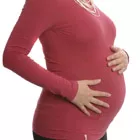
Prof. Dr. Balázs Csaba
Endokrinológus
A Budai Endokrinközpont specialistája "endokrinológia" témakörben
Kérem, tegye fel kérdéseit, készséggel válaszolok Önnek! Bizalmát köszönöm!
Endokrinológus
A Budai Endokrinközpont specialistája "endokrinológia" témakörben
Kérem, tegye fel kérdéseit, készséggel válaszolok Önnek! Bizalmát köszönöm!
Témakörök ►
Kérdezz-felelek
Kérdezni a gomb megnyomásával tudsz, amennyiben a napi kérdések száma még nem haladta meg a napi limitet.
Kedves Professzor Úr!
Az Önöz járok kezelésre, azonban külföldön élek. Tavaly szeptembere óta poszt-partum tireoiditisz miatt 1/2 tabletta Letrox-ot, 200mcg Szelént és a prolaktin szint miatt 1/2 tabletta Bromocriptin-t szedek. A kérdésem az lenne, hogy terhesség esetén továbbra is szedhető-e ez a mennyiségű szelén, illetve mi a helyzet akkor, ha heterozigóta Leiden Faktor V miatt 75 mg aszpirint kell szedni terhesség alatt? Azt olvastam, hogy a szelén a véralvadást gátolja és aszpirin szedése mellett nem javasolt.
Továbbá szeretnék érdeklődni, hogy a két gyógyszer adagját automatikusan kell-e 1-re emelni, vagy csak az eredmények fényében érdemes változtatni az adagon.
Válaszát előre is nagyon köszönöm!
Az Önöz járok kezelésre, azonban külföldön élek. Tavaly szeptembere óta poszt-partum tireoiditisz miatt 1/2 tabletta Letrox-ot, 200mcg Szelént és a prolaktin szint miatt 1/2 tabletta Bromocriptin-t szedek. A kérdésem az lenne, hogy terhesség esetén továbbra is szedhető-e ez a mennyiségű szelén, illetve mi a helyzet akkor, ha heterozigóta Leiden Faktor V miatt 75 mg aszpirint kell szedni terhesség alatt? Azt olvastam, hogy a szelén a véralvadást gátolja és aszpirin szedése mellett nem javasolt.
Továbbá szeretnék érdeklődni, hogy a két gyógyszer adagját automatikusan kell-e 1-re emelni, vagy csak az eredmények fényében érdemes változtatni az adagon.
Válaszát előre is nagyon köszönöm!
Tisztelt Kérdező!
A Letrox dózisa attól függ, hogy a terhesség melyik trimeszterében van. A terhesség alatt ugyanis a TSH szintje 3 havonta (trimeszterenként) változik, ezért a terhesek értékeit ezekhez a módosított referencia értékekhez kell hasonlítani!).
Napi gyakorlatomra hivatkozhatom, ugyanis a terheseknél megfigyelt alacsonyabb (pl. 0.1 mU/l) értéknél szegény asszonyokat azonnal vizsgálatra utalják, pedig egy élettani folyamatról van szó. Ugyanis terhesség alatt egy természetes pajzsmirigy túlműködés van, ugyanakkor a pajzsmirigy gyulladásos betegségeire nem vagy csak ritkán gondolnak.
Az Amerikai Pajzsmirigy Társaság 2011-ben dolgozta ki terhességben a TSH ún. normál értékeire és a kezelésre vonatkozó ajánlásait. (American Thyroid Association Pregnancy and Postpartum Guidelines. Stagnaro-Green, Alex, et. al. "Guidelines of the American Thyroid Association for the Diagnosis and Management of Thyroid Disease During Pregnancy and Postpartum." Thyroid. Volume 21, Number 10, 2011).
Első trimeszter: 0.1-2.5 mIU/L
Második trimeszter: 0.2-3.0 mIU/L
Harmadik trimeszter: 0.3-3.0 mIU/L
A Szelén dózisát ebben az esetben 100 ug-ra csökkentheti.
Egyébként:
SERUM SELENIUM CONCENTRATIONS IN PREGNANT WOMEN, IN WOMEN WITH THYROID DISORDERS AND IN HEALTHY WOMEN IN HUNGARY: IS THERE A NEED TO SUPPLEMENT?
Jeannette Molnár1, Zoltán Garamvölgyi2, János Rigó Jr. 2, Csaba Balázs3, Nóra Adányi4
1Molzsa Medical Kft., Budapest, Hungary
21st Department of Obstetrics and Gynecology, Semmelweis University, Budapest, Hungary
3Polyclinic of the Hospitaller Brothers of St. John of God in Buda, Budapest, Hungary
4Central Food Research Institute, Budapest, Hungary
Introduction: Selenium is an essential trace element. Its recommended daily allowance is 55 μg for women and 70 μg for men, while in pregnancy the National Research Council recommends a dietary intake of 60 μg. Selenium supplementation was reported to prevent colorectal cancer in the United States. Recently, the importance of an optimal selenium intake in thyroid diseases has been stressed by European guidelines. In the 1990s it was established that Hungary is a country with a marginal selenium deficiency. However, there have been few data reporting serum selenium concentrations in Hungary in the last decade.
Materials and methods: Serum selenium concentrations were determined in 33 healthy female study participants, 18 women with thyroid disorders and 97 pregnant women. Selenium concentrations were measured by hydride generation atomic absorption spectrometry following the nitric acid - perchloric acid – sulphuric acid digestion procedure.
Results: Serum selenium concentrations were significantly lower in pregnant women than in non-pregnant study particpants (46.77±12.04 μg/l compared to 77.06±12.55 μg/l). Selenium concentrations did not differ between healthy women and women with thyroid disorders. Selenium levels ranged from 22.95 μg/l to 77.90 μg/l in pregnant women with a median of 44.70 μg/l. In non-pregnant women, selenium concentrations varied between 45.80 μg/l and 107.43 μg/l (median: 74.50 μg/l).
Conclusions: Mean serum selenium concentrations of non-pregnant women determined in the last two years are higher than those reported in the early 1990s. This may be either explained by the use of a more advanced technique for selenium measurements or by a change in nutrition favouring the consumption of foodstuffs containing higher amounts of selenium. Serum selenium concentrations of pregnant women are low compared to international data and selenium supplementation may be considered in a few cases. Selenium supplementation of women with endocrine ophtalmopathy or autoimmun thyroiditis and high anti-TPO levels is currently recommended.
Jó egészséget kívánok, tisztelettel:
Prof. Dr. Balázs Csaba
2013-02-02 16:58:48
A Letrox dózisa attól függ, hogy a terhesség melyik trimeszterében van. A terhesség alatt ugyanis a TSH szintje 3 havonta (trimeszterenként) változik, ezért a terhesek értékeit ezekhez a módosított referencia értékekhez kell hasonlítani!).
Napi gyakorlatomra hivatkozhatom, ugyanis a terheseknél megfigyelt alacsonyabb (pl. 0.1 mU/l) értéknél szegény asszonyokat azonnal vizsgálatra utalják, pedig egy élettani folyamatról van szó. Ugyanis terhesség alatt egy természetes pajzsmirigy túlműködés van, ugyanakkor a pajzsmirigy gyulladásos betegségeire nem vagy csak ritkán gondolnak.
Az Amerikai Pajzsmirigy Társaság 2011-ben dolgozta ki terhességben a TSH ún. normál értékeire és a kezelésre vonatkozó ajánlásait. (American Thyroid Association Pregnancy and Postpartum Guidelines. Stagnaro-Green, Alex, et. al. "Guidelines of the American Thyroid Association for the Diagnosis and Management of Thyroid Disease During Pregnancy and Postpartum." Thyroid. Volume 21, Number 10, 2011).
Első trimeszter: 0.1-2.5 mIU/L
Második trimeszter: 0.2-3.0 mIU/L
Harmadik trimeszter: 0.3-3.0 mIU/L
A Szelén dózisát ebben az esetben 100 ug-ra csökkentheti.
Egyébként:
SERUM SELENIUM CONCENTRATIONS IN PREGNANT WOMEN, IN WOMEN WITH THYROID DISORDERS AND IN HEALTHY WOMEN IN HUNGARY: IS THERE A NEED TO SUPPLEMENT?
Jeannette Molnár1, Zoltán Garamvölgyi2, János Rigó Jr. 2, Csaba Balázs3, Nóra Adányi4
1Molzsa Medical Kft., Budapest, Hungary
21st Department of Obstetrics and Gynecology, Semmelweis University, Budapest, Hungary
3Polyclinic of the Hospitaller Brothers of St. John of God in Buda, Budapest, Hungary
4Central Food Research Institute, Budapest, Hungary
Introduction: Selenium is an essential trace element. Its recommended daily allowance is 55 μg for women and 70 μg for men, while in pregnancy the National Research Council recommends a dietary intake of 60 μg. Selenium supplementation was reported to prevent colorectal cancer in the United States. Recently, the importance of an optimal selenium intake in thyroid diseases has been stressed by European guidelines. In the 1990s it was established that Hungary is a country with a marginal selenium deficiency. However, there have been few data reporting serum selenium concentrations in Hungary in the last decade.
Materials and methods: Serum selenium concentrations were determined in 33 healthy female study participants, 18 women with thyroid disorders and 97 pregnant women. Selenium concentrations were measured by hydride generation atomic absorption spectrometry following the nitric acid - perchloric acid – sulphuric acid digestion procedure.
Results: Serum selenium concentrations were significantly lower in pregnant women than in non-pregnant study particpants (46.77±12.04 μg/l compared to 77.06±12.55 μg/l). Selenium concentrations did not differ between healthy women and women with thyroid disorders. Selenium levels ranged from 22.95 μg/l to 77.90 μg/l in pregnant women with a median of 44.70 μg/l. In non-pregnant women, selenium concentrations varied between 45.80 μg/l and 107.43 μg/l (median: 74.50 μg/l).
Conclusions: Mean serum selenium concentrations of non-pregnant women determined in the last two years are higher than those reported in the early 1990s. This may be either explained by the use of a more advanced technique for selenium measurements or by a change in nutrition favouring the consumption of foodstuffs containing higher amounts of selenium. Serum selenium concentrations of pregnant women are low compared to international data and selenium supplementation may be considered in a few cases. Selenium supplementation of women with endocrine ophtalmopathy or autoimmun thyroiditis and high anti-TPO levels is currently recommended.
Jó egészséget kívánok, tisztelettel:
Prof. Dr. Balázs Csaba
2013-02-02 16:58:48
Olvasói értékelés: nincs még értékelés











